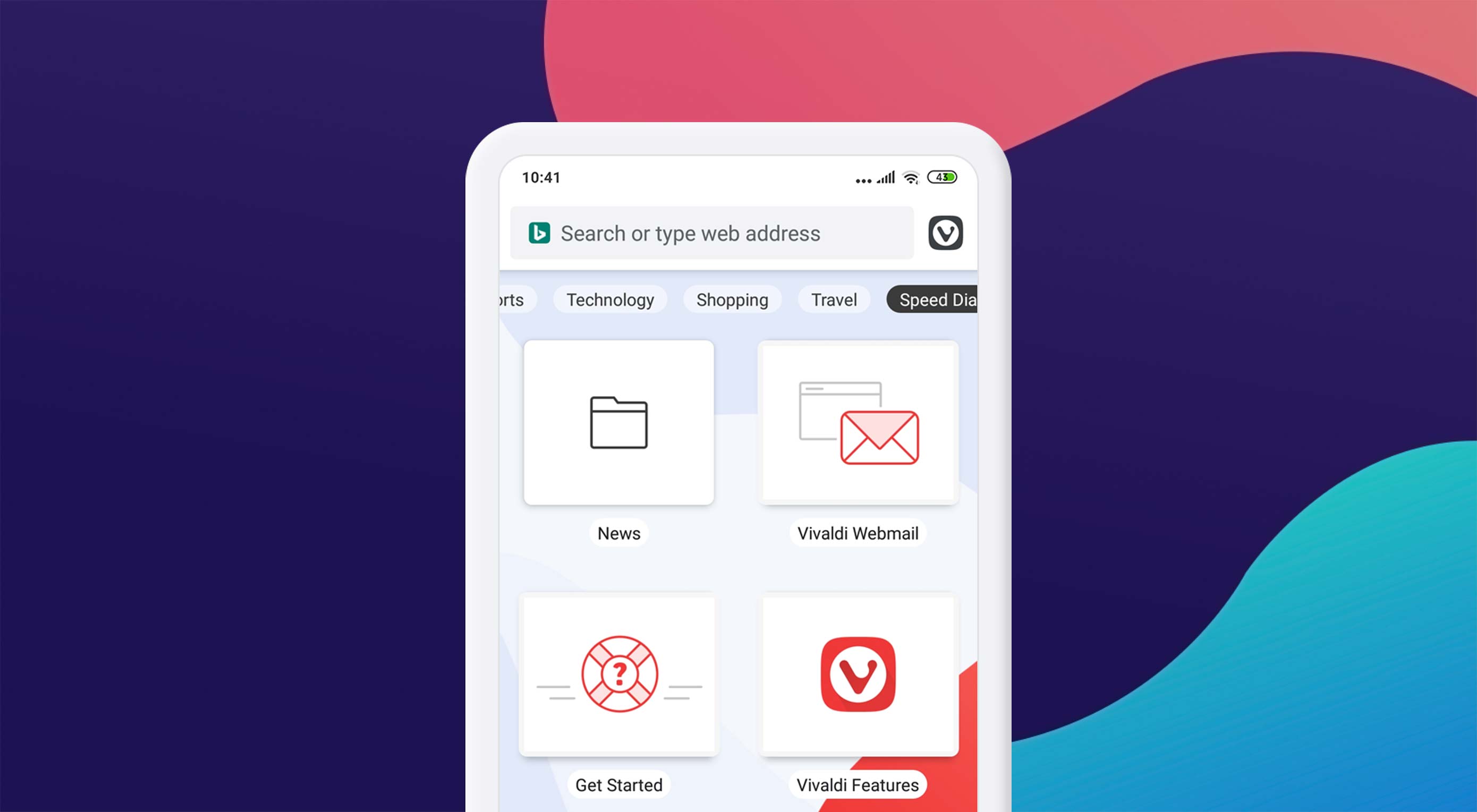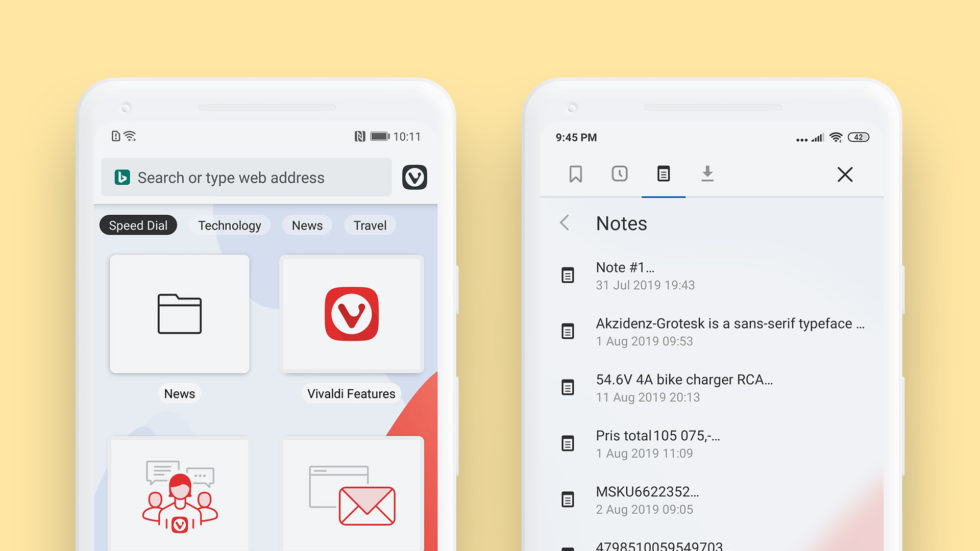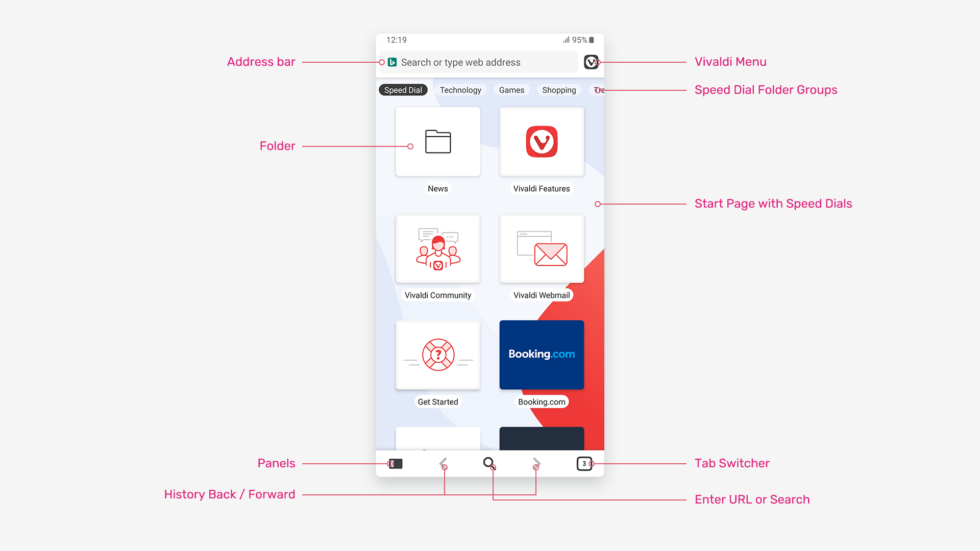 It’s time for me to go all fanboy on you guys, because Vivaldi is on Android, ya’ll! Vivaldi the browser, that is. You know, the one made by former Opera devs, and which is aimed at power users who want loads of customization and choice, plus a little privacy.
It’s time for me to go all fanboy on you guys, because Vivaldi is on Android, ya’ll! Vivaldi the browser, that is. You know, the one made by former Opera devs, and which is aimed at power users who want loads of customization and choice, plus a little privacy.
It’s the browser I’ve been using and only mildly worshipping for a while, now. Look, it’s just best if we make it clear that I am biased. Though I do worry that too many browsers are based on the Chromium project these days, I give Vivaldi a pass because it’s just that good. It’s been my day-to-day browser on the desktop since version 2.0 released in October 2018, and now it’s going to be my main browser on my phone.
Well, I might wait until it’s out of beta. We’ll see.
So what do you get in this version of Vivaldi for Android?
Vivaldi Features
Encrypted Sync – You can synchronize all of your bookmarks, history, and other data with the mobile version, no problem. Not done reading an article you started on your desktop or laptop? Open the menu and hit “Recent Tabs”. Tabs from other devices will be there too.
Notes: This is end-to-end encryption, so the people that make Vivaldi never see your data. It won’t sync your extensions, for obvious reasons.
Lite Mode – This is a browsing mode designed to save you data while you’re on the go. Like Opera’s Turbo Mode before it, it routes your browsing through their own servers, where they compress the data you receive on your end. I have no idea if this is encrypted, though. I haven’t been able to find too much in-depth information on this feature.
Notes – The Notes app in Vivaldi’s desktop version made it to the mobile version. They’re dead-simple text based notes, but they do get synced across devices with everything else.

Page Capture – It does what it says on the tin. You can capture what’s visible on your screen, or you can capture the whole darned page. Keep in mind that mobile pages can get very, very long, as the page’s width gets squished down to mobile sizes.
Search Engine Nicknames – So when you’re typing in a URL bar, you can type “g ducks” to search on Google for ducks, or “w ducks” to search Wikipedia, or “b Google” for reasons that I’m sure you can guess.
Reader Mode – This is a great feature that many other browsers already have, but hey, it’s good that Vivaldi has it, too. Cut out all distractions, and just get to the article already with the push of a button.
Tab Management – Okay, let’s be real. It’s easy enough to browse through your existing tabs, recently closed tabs, and even tabs from other devices. Those features are all well and good, but you’re just not going to get the same depth of tab organization tools. At least… not yet. It’s a beta of the first version, so I’d expect more advanced tab management to come along, down the road.
(Oh, and in this beta version, tab previews don’t always load.)
Private Browsing – It would be dumb if they didn’t have it.
Important features they didn’t bother to mention – As with the desktop version, one of Vivaldi’s strongest selling points is the feature that you will probably use only once: the settings screen. They’ve got loads of options that allow you to customize how the browser works, particularly in regards to privacy.
First Impressions of Vivaldi for Android
It feels snappy. For context, my current phone is a Xiaomi Redmi Note 5A; it’s not particularly high-end, but it’s not slouch either. Even so, I’ve had Chrome and even Firefox sometimes feel sluggish and annoying. I’ve just started using Vivaldi, but I can say that so far it feels faster and smoother.
Will it stay that way? Time will tell.
As it is, they also pay attention to detail, and they are considering the needs of a variety of users. Case in point: there’s a button that allows you to access the search/URL bar at the bottom of the screen, so you can use the browser one-handed. Heck, it even makes two-handed browsing easier, depending on the size of your phone.

The one thing I most miss from the desktop version is an ad blocker. That’s right, no native ad blocking with Vivaldi on Android. It’s very sad.
All in all, though, I believe Vivaldi’s mobile version is a strong contender.
p img {display:inline-block; margin-right:10px;}
.alignleft {float:left;}
p.showcase {clear:both;}
body#browserfriendly p, body#podcast p, div#emailbody p{margin:0;}